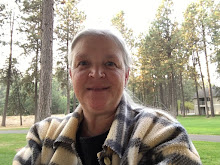
When it comes to tomatoes it's hard to beat a Roma. Meaty and flavorful it is one of the most versatile tomatoes I know.
And ask any gardener, they'll tell you, nothing beats homegrown over store bought like the flavor of a tomato.
As far as being clean (talking chemicals in the commercially grown tomatoes) the tomato is on the clean list, being 14 out of 15 with #1 being the cleanest. So off season if I had to choose where to spend my organic dollar it might not be on a tomato.
Growing Tomatoes
Tomatoes are one of the easiest garden plants to grow from seed. The fact is they grow so fast that you often run out of space for them before you can safely put them out in the garden. If you start tomatoes from seed in early spring be prepared to transplant multiple times and have plenty of space for them in a sunny area. Most important to your success, once you get them out into the garden, is to not let them get root bound. Keep transplanting into bigger pots until you can safely plant the tomato plants outside.
You can also purchase seedlings from local nurseries and get an even faster start. I personally would purchase from my local farmer's market. You will get plants that are hardy for your area, have the benefit of the knowledge of the farmer who grew it and you will be supporting your local industry. An added benefit is that you will easily be able to try different varieties without having to purchase multiple seed packs and ending up being over run by tomatoes. Remember that tomatoes need plenty of room and full sun pretty much from the time they are germinated. (The local farmer's market is sounding better all the time, right?)
There are two types of tomatoes, determinate and indeterminate. Determinate types are bushier and more compact than indeterminate types. Indeterminate types have sprawling vines and need support. Determinates are better suited to smaller growing areas.
Tomatoes are heavy feeders, so it's important to make sure there's plenty of good organic matter mixed into the growing area. Here again, home made compost or better yet, worm compost or vermicompost is far superiour to the bagged stuff you buy at a big box store. When I drive by and see all that bagged material sitting out in that hot sun just baking, I know there's not going to be a speck of life left by the time the bag gets home and gets used.
When transplanting your young tomato plants bury them deeper than the previous soil level. You can even remove a good portion of the lower leaves, dig a deep trench and bury the whole stem, leaving just the upper portion of the plant sticking above the soil. The stem will root all along it's length. Planting your tomatoes deeper encourages healthily initial growth and stronger plants.
Watering is probably the trickiest part of growing tomatoes. It's important to not allow the soil to dry out or keep it too wet. Too dry and they will develop leathery shoulders and just one over watering will cause the fruit to split. Remember to water deep.
Caution: When growing Tomatoes always remind yourself - they do not like their leaves wet. To prevent diseases, water only the soil below and around your Tomato plants.
Here is a great book on organic gardening that I highly recommend. I always enjoy his approach to the earth. Eliot Coleman will become one of your most valuable resources.



 The other is a more traditional solution, to interplant the bulb with a late arrival in the garden. Plant with a perennial that is slow to wake up in the spring and somewhat slow to get started to give the bulb time to replensh itself before it is shaded out by the perennial.
The other is a more traditional solution, to interplant the bulb with a late arrival in the garden. Plant with a perennial that is slow to wake up in the spring and somewhat slow to get started to give the bulb time to replensh itself before it is shaded out by the perennial.








